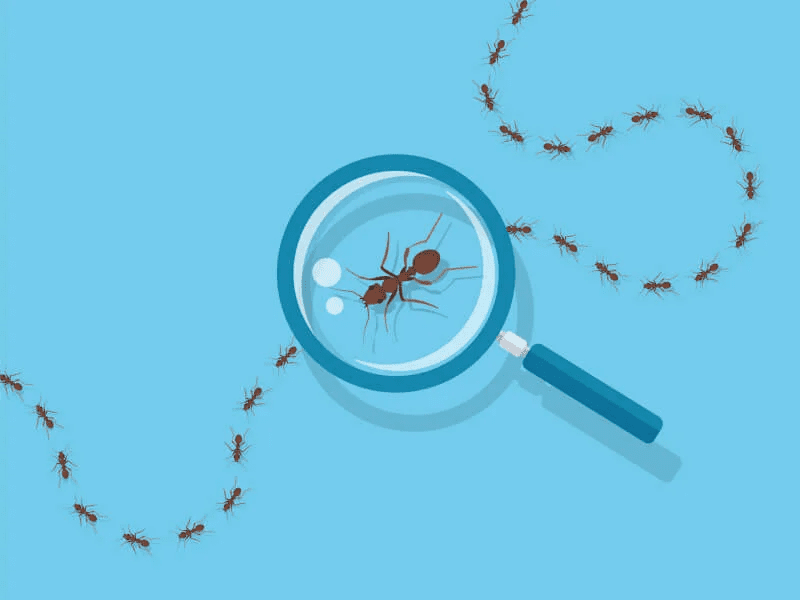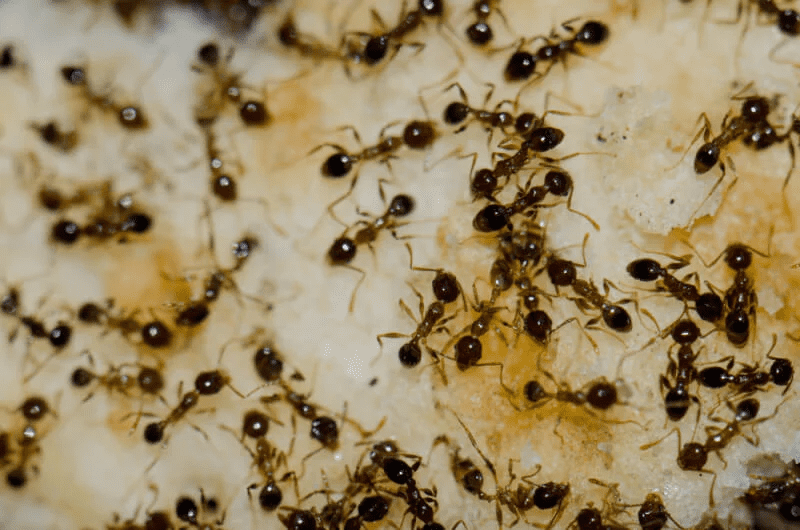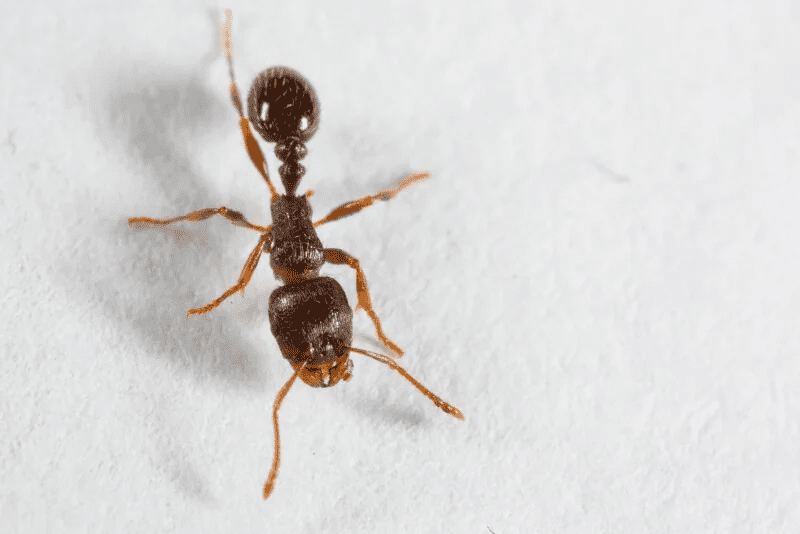
There are a wide variety of pests who have the power to wreck your home. At first sight, identifying the kind of ant wrecking your home can be tricky, but if you want to solve the problem, then ant identification is your crucial first step. Argentine ants and pavement ants, for instance, share the same shape – both are augmented and oval. It can be confusing to see their distinctions from each other.
So what’s the difference between an Argentine ant and pavement ant? They differ in size, color, habitat, level of threat and the level of difficulty to control their infestations. The Argentine ant and pavement ant also differ in the food that they consume and things that they’re attracted to.
How Can I Tell the Difference Between an Argentine Ant and a Pavement Ant?
1) Color
The Argentine ant is distinguished by its color. Its color ranges from a light to dark shade of brown. Its brown appearance also has a shiny texture. The pavement ant, conversely, ranges from dark brown to black. In addition, the pavement ant also has a more textured appearance compared to the Argentine ant.
2) Size
In size, the Argentine ant is bigger than the pavement ant. The Argentine ant measures 1/16 to ¼ inches. Meanwhile, the pavement ant is 1/16-⅛ inch long.
3) Habitat
Pavement ants nestle tend to nestle deep; they reside indoors, under floors, cement slabs, bricks, logs, stones, patio blocks, in cracks along curbs and underground. True to its name, pavement ants also invade pavements and beside walls and sources of heat indoors. In the Atlantic coastal region, in the Midwest and the West Coast, pavement ants are considered pests.
Argentine ants have a high abundance in areas where there is excess moisture and a wet environment. They also reside near food sources. In California, Argentine ants are plenty in coastal areas, near rivers and in urban settings.
4) Threat
Argentine ants are not considered a direct threat to humans as they don’t sting or bite. However, they can pose a threat as Argentine ants are adaptable and travel in trails with massive Argentine ant colonies.
Argentine ants can also enter homes through cracks and other spaces as they search for food and water so they can establish large economies, which results in their high reproductive rate and in turn, status as a nuisance pest in houses.
Clearing the way for plant-feeding pest insects, Argentine ants disrupt the activities of native ants and pollinators. They also plant pest insects in return for the sweet honeydew secretions that they receive from the other insects.
Pavement ants sting and bite, which make them a direct threat to humans. Pavement ants are also capable of invading your property. They can creep their way inside your home through cracks and then stay until they will be forced out.
Whenever they nestle as they have large colonies with more than one queen, they can cause significant damage, especially to sidewalks. A notable threat from the pavement ant is that they can contaminate leftover pet food.
Compared to Argentine ants, pavement ants are more dangerous because of their ability to contaminate food as well as sting and bite in addition to their capability of wrecking your home.
5) Attractions
Argentine ants are attracted to darkness, decay, food and water. They also are allured by areas where there’s significant moisture. Meanwhile, meat, grease, other insects, household food and heat are among what charms pavement ants.
How to Control Ant Infestations
Argentine Ants

When it comes to dealing with Argentine ants, it’s an ongoing and difficult process. Argentine ants don’t have a direct enemy so they are usually managed through 2 methods: using pesticides and baits.
Spraying of pesticides when dealing with Argentine ants is only a band-aid solution because colonies of Argentine ants reside below ground, where pesticide can’T permeate. Compared to pesticides, poison bait is a more effective solution for controlling Argentine ants.
A consideration for using poison bait to deal with Argentine ants is that the distribution for poison bait should be prolonged and taken as a step alongside preventing Argentine ants from entering your home.
Pavement Ants

Ant baits and ant dust are 2 effective methods for dealing with pavement ants. Another consideration when it comes to controlling a pavement ant infestation in your home is to kill the ant colony by killing their queen.
Insecticidal sprays aren’t as effective as they can only kill the visible pavement ant workers. If you do use insecticidal bait, you have to make sure that the pavement ant workers take it and carry it back to the nest to feed their queen.
You’ll also have to use a slow-acting insecticidal bait for this method to be effective, as it buys pavement ant workers extra time to take the poison to their colony before their death.
How to Prevent Ants from Entering Your Home

Both pavement and Argentine ants can invade your home. Dealing with both of them can be troublesome, not to mention the possible damages they can also give to your home. In the summer, pests (including the pavement and Argentine ants) come out and start to build their nests all around deep areas and places near food and water.
Fortunately, there are ways that you can still prevent these 2 types of ants from entering your home:
- Clean your house. Wherever there is some water and food (especially greasy food), ants flock there. One step to preventing ants from coming to your home is to clean your house. You can tend to your dirty dishes, throw your food properly and wipe down open surfaces, as dirt tends to easily stick to those.
- Store your food properly. Food is the number one charm for pests, ants included. It’s essential that you keep your food stored in an air-tight container and away from open areas. Restricting the access to your food also means less chances of ants coming in as they tend to be attracted to food.
- Seal off cracks in your home. Both Argentine and pavement ant pests invade your house by slipping through the cracks in your home. From there, they usually tend to find food or water nearby and will stay there. Search for areas around your home where there are cracks and then put a sealant on them. Sealants can degrade over time, so don’t forget to replace them every once in a while.
- Spray an ant barrier around your home. Spraying an ant barrier can help redirect scout ants away from your home. There are plenty of ant barriers that are easily available but for better results, you can always ask for help from professional pest control.
Get Rid of Pesky Ants with Midway Pest Management
Now that you’ve identified the difference between an Argentine and pavement ant, you’re one step to solving your pesky ant problem. Pests, especially ants, can be troublesome to deal with as they require a proactive approach and different methods. If you want better results for managing pests, you should contact the pest control professionals.
At Midway Pest Management, we offer high-quality pest control services by tailoring pest management programs specific for your home or business needs and providing you with excellent customer service. You can finally say goodbye to pests in your home and office with our fumigation, nest/colony removal and other guaranteed effective pest control methods. Contact us today.
Learn More: How To Get Rid of Pavement Ants Naturally